#nohire
Explore tagged Tumblr posts
Photo

Benin’s Court is looking for Magajiya UTP Nohir of Benin. She is aged 30-40 and is a demigod.
She was not meant to rule. Her blood held no claim to that right, but when men tried to take her away from her home, she fought. And she won. So she didn’t stop fighting. In every battle, she won the hearts of the men, and although her people did not worship the old gods, they swore they could see Ògún in her, which was more accurate than they could know. Even she does not know that her mother, a Hausa woman, had an affair with a Yoruban Orisha. But none of that mattered. It was her actions that mattered to people, not the matter of her birth, and soon, it was official. She would rule them, as no one else could keep them as safe as she did.
Her opinion on the treaty is UTP, but she will do what is right by her people.
Connections:
Advisor: he has been by her side for so long, she can’t imagine life without him. While she may know what to do on the battlefield, she knows that with peace, she is not as experienced, so she needs him more than ever.
Baugrygr Asmunddottir: meeting another woman who led men in battle was something that captured her attention, admiring the fair woman. While the two have only wrestled on the battlefield, she has thought it’d be nice to wrestle in the bedroom as well.
She also has connections to the court of Benin. She is the leader of the Hausa people in Benin.
Suggested fcs include: Lupita Nyong'o, Danai Gurira, Estella Daniels, Lashana Lynch
1 note
·
View note
Text
Edición Especial T1 N19 Aventuras en USA Parte 2
0 notes
Photo

🗣 We are looking to add to our team ... call or stop in today ... Stylist / Braiders / MUA’s/ Lash , Eye brow Specialist / Massage Therapist .... we have positions available for daily , Part time and Full time as well ... for more info call or stop in today!!! #eminent8salonspa #eminent8 #atlsalon #atlstylist #atlmua #muaatlanta #atlspa #spaatlanta #atlhaircare #atlsewin #atljobs #stylistjobatl #nohiring #atlbraiders #atlbraids #professionalhairsalon https://www.instagram.com/p/BtPJf-qn1FK/?utm_source=ig_tumblr_share&igshid=7jmhcyxpaqrh
#eminent8salonspa#eminent8#atlsalon#atlstylist#atlmua#muaatlanta#atlspa#spaatlanta#atlhaircare#atlsewin#atljobs#stylistjobatl#nohiring#atlbraiders#atlbraids#professionalhairsalon
0 notes
Photo

@realdonaldtrump @ #MMIW can we get a '#NiaJaxWhut' concerning the non-#cityhall @cityofto or #Montreal #401 dancer circuit storage of the history of paper binders stock full of so-called licensed dancers and thus lifetime gossip? #Ronald, #NXT time dive in headfirst at #NiagaraFalls bcuz #OHIP payments & #insurance sure led you like a horse AND you drank the water. Donald, #WeAllKno about the history of Rogue and Rouge #WWE concerns about condominium development if folks on this list get preyed upon. It's an amazing story that somehow in the history of #Toronto nobody has raised a concern about the lifetime storage of these documents. @gloria.allred, why is there no entertainers, athletes or politicians demanding a Stop Work Order on any Matrixes of potentia!l #darknet #data with respect to correlation attacks on the stability of any mother or father who might still be on #TheList of #nohire dancers? @erinburnettoutfront (at Greater Toronto Area)
#niagarafalls#niajaxwhut#weallkno#thelist#cityhall#insurance#toronto#ohip#montreal#wwe#data#darknet#nohire#401#nxt#ronald#mmiw
0 notes
Text
@camilla-the-bewitching-beauty

“ oh man! I can’t believe I managed to find such a great haul today! “ Spoke Keaton as the Wolfkin was carrying around a box of useless knickknacks and other Quality Junk that he could scour around the area. Feeling very proud of what he got he was about to head over his room before bumping into the Voluptuous beauty in all The kingdom of Nohir, Camillia.
“ A-Ahh! Sorry about that Camillia, didn’t see ya there. Don’t mind me “ he grinned brightly at the nohiran Royal
8 notes
·
View notes
Text
Queen Amina of Zaria
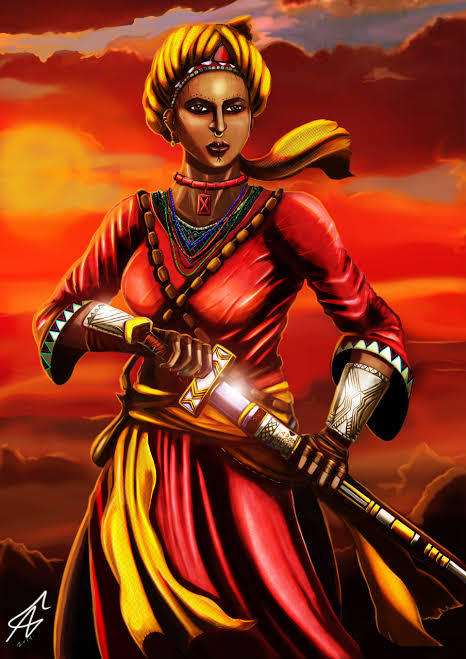
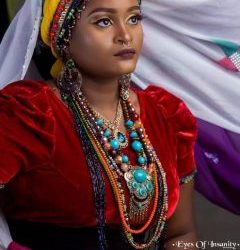
Queen Amina of Zaria (also Aminatu; d. 1610) was a Hausa warrior queen of the city-state Zazzau (present-day city of Zaria in Kaduna State). She ruled in the mid-sixteenth century. Background information Full Name: Amina Title: Queen of Zazzau Reign: 1576-1610 Coronation: 1576 Predecessor: Karama Born: Middle of the sixteenth century Died: 1610 Death place: Attaagar Father: King Nikatau Mother: Queen Bakwa Turunku
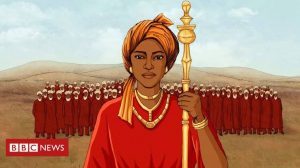
Biographical history Queen Amina was born in the middle of the sixteenth century CE to King Nikatau, the 22nd ruler of Zazzau, and Queen Bakwa Turunku (r. 1536–c. 1566). She had a younger sister named Zaria for whom the modern city of Zaria (Kaduna State) was renamed by the British in the early twentieth century. According to oral legends collected by anthropologist David E. Jones, Amina grew up in her grandfather's court and was favored by him. He carried her around court and instructed her carefully in political and military matters. At age sixteen, Queen Amina was named Magajiya (heir apparent), and was given forty female slaves (kuyanga). From an early age, Queen Amina had a number of suitors attempt to marry her. Attempts to gain her hand included “a daily offer of ten slaves” from Makama and “fifty male slaves and fifty female slaves as well as fifty bags of white and blue cloth” from the Emir of Kano. After the death of her parents in or around 1566, Amina's brother became king of Zazzau. At this point, Amina had distinguished herself as a “leading warrior in her brother's cavalry” and gained notoriety for her military skills. Queen Amina is still celebrated today in traditional Hausa praise songs as “Amina daughter of Nikatau, a woman as capable as a man.” Also Read About: Ikeji Festival

Queenship and expansion of Zazzau After the death of her brother Karama in 1576, Amina ascended to the position of queen. Zazzau was one of the original seven Hausa States (Hausa Bakwai), the others being Daura, Kano, Gobir, Katsina, Rano, and Garun Gabas. Before Amina assumed the throne, Zazzau was one of the largest of these states. It was also the primary source of slaves that would be sold at the slave markets of Kano and Katsina by Arab merchants. Only three months after being crowned queen, Amina waged a 34-year campaign against her neighbors, meant to expand Zazzau territory. Her army, consisting of 20,000 foot soldiers and 1,000 cavalry troops, was well trained and fearsome. In fact, one of her first announcements to her people was a call for them to “resharpen their weapons.” She conquered large tracts of land as far as Kwararafa and Nupe. Legends cited by Sidney John Hogben say that she took a new lover in every town she went through, each of whom was said to meet the same unfortunate fate in the morning: “her brief bridegroom was beheaded so that none should live to tell the tale.” Under Queen Amina, Zazzau controlled more territory than ever before. To mark and protect her new lands, Amina had her cities surrounded by earthen walls. These walls became commonplace across the nation until the British conquest of Zazzau in 1904, and many of them survive today, known as ganuwar Amina (Amina's walls).
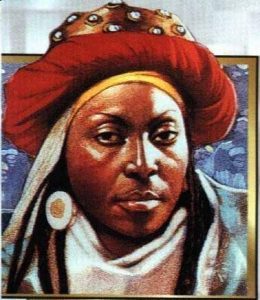
Queen Amina Death
The exact circumstances of Amina's death are not known. The nineteenth-century Muslim scholar Dan Tafa says that “She died in a place called Attaagar. It was for this reason that the kingdom of Zakzak was the most extensive among the kingdoms of Hausa, since Bauchi included many regions.” Drawing on Tafa's account, Sidney John Hogben reports that “Amina died in Atagara, near present day Idah, for at that time Amina had pushed the frontiers of Zazzau south of the Niger-Benue conference.”
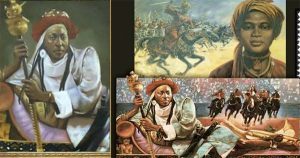
Queen Amina Legacy
As the British historian Michael Crowder has noted, after Amina's death Queen Amina Stage ...ruling class Hausa women experienced a steady diminution in their influence and were systematically deprived of their authority and autonomy. The traditional titles and offices relating to authority over women and redress of their grievances have now become nominal or have been discarded all together. Although Amina's success as a ruler did not have a trickle down effect on her female successors, Amina enjoyed a lasting reputation, bordering on legend, as a woman warrior. Sultan Bello of Sokoto wrote: Strange things have happened in the history of the seven Hausa States, and most strange of these is the extent of the possessions which God gave to Aminatu, daughter of the ruler of Zazzau. Queen Amina waged war in the Hausa lands and took them all so that the men of Katsina and the men of Kano brought her tribute. She made war in Bauchi and against the other towns of the south and of the west, so that her possession stretched down to the shores of the sea Beyond her expansion of Zazzau territory, she created trade routes throughout Northern Africa. Additionally, Queen Amina has been credited with ordering the construction of a distinctive series of ancient Hausa fortifications, known as ‘Amina’s walls’, and with introducing kola nut cultivation in the area.

Historical references One of the earliest sources to mention Amina is a map called the Planisphere of Domingos Teixeira, which was made in 1573 and names a place in Africa as “Castelo Damina,” the Castle of Amina. One of the earliest textual sources to mention Amina is Muhammed Bello's history Ifaq al-Maysur, composed around 1836. He claims that she was "the first to establish government among ," and she forced Katsina, Kano and other regions to pay tribute to her. Bello provided no chronological details about her. She is also mentioned in the Kano Chronicle, a well-regarded and detailed history of the city of Kano, composed in the late nineteenth century, but incorporating earlier documentary material. According to this chronicle, she was a contemporary of Muhammad Dauda, who ruled from 1421–38, and Amina conquered as far as Nupe and Kwarafa, collected tribute from far and wide and ruled for 34 years. A number of scholars accept this information and date her reign to the early to mid-fifteenth century. There also is a local chronicle of Zaria itself, written largely the nineteenth century but extending to 1902, published in 1910, that gives a list of the rulers and the duration of their reigns. Queen Amina is not mentioned in this chronicle, but oral tradition in the early twentieth century held her to be the daughter of Bakwa Turunku, whose reign is dated by the chronicle from 1492–1522. On this basis, some scholars date her reign to the early sixteenth century. Historian Abdullahi Smith, however, places her reign after 1576.

Modern cultural depictions The Queen Amina Statue at the National Arts Theatre in Lagos State honors her, and multiple educational institutions bear her name. Amina is the protagonist of the historical fantasy novel Queen of Zazzau (2018) by J.S. Emuakpor, based on her life beginning in 1557 CE. More recent oral tradition has a series of lively stories about the queen, and these have found their way into popular culture. Among them were: Amina was a fierce warrior and loved fighting. As a child, her grandmother Marka, the favorite wife of her grandfather Sarkin Nohir, once caught her holding a dagger. Amina holding the dagger did not shock Marka, rather it was that Amina held it exactly as a warrior would. As an adult, Queen Amina refused to marry for the fear of losing power. She helped Zazzau (Zaria) become the center of trade and to gain more land. Her mother, Bakwa, died when Amina was 36 years old, leaving her to rule over Zaria. Reference: https://en.m.wikipedia.org/wiki/Amina Read the full article
0 notes
Text
Crown Her ~ Queen Amina

Queen Amina also known as Queen Aminatu was a Hausa Warrior Queen Of Zazzau( now Zaria), in what is now the north- west region of Nigeria. Amina was born around 1533 in Zaria. She was born to the ruler, Bakwa of Turunku, who lived in the city state of Zazzau. As a child, her grandmother Marka , the favorite the wife of Sarkia Nohir, once caught her holding a dagger. The dagger did not shock…
View On WordPress
0 notes
Photo

Kænland’s Council is looking for Baugrygr UTP Asmunddottir of Kænland. She is aged 30-40 and is human.
Growing up on stories of the Valkyries, she always knew what she wanted to be. Shieldmaidens weren’t unheard of, but she wanted to lead, to inspire, just like she’d been. As a child, she was always seen with a sword in her hand, but she was not rough like people might expect. She understood, from the stories of the Valkyries, that battle was not enough. Leading the shieldmaidens in battle and in their duties at home, she was not going to be like a man. Kindness, empathy, intelligence, all those were necessary to be a good ruler, and she has them all. She hopes that the Valkyries will be proud of her.
Her opinion on the treaty is UTP, but she will remain inspired by the Valkyries.
Connections:
Jarl Ivarson: seeing how well the young man fought, Ivarson rewarded him with wealth, helping to look after the poor man’s family, and it brought loyalty, for the first time, making Ivarson very pleased.
Jarl Tovardson: she’d been good friends with his father, and now that he is expected to lead, she’s throwing her full support behind him. She’s often giving him advice, and has promised to help him if anyone gives him trouble.
Magajiya Nohir: although she is used to being around warrior women, she still admires the dark skinned woman for all that she’s achieved. She knows just how hard it is.
She also has connections to the council of Kænland.
Suggested fcs include: Alyssa Sutherland, Bridget Regan, Hayley Atwell, Jennifer Morrison
#vikings rp#vikings roleplay#httyd rp#httyd roleplay#mythology rp#baugrygr asmunddottir#kwenland#kwenland council#human#open character
1 note
·
View note
Text
No Conclusion on No-Hire Lawsuit?
The New York Times is reporting this morning that a settlement is close in the class-action lawsuit brought against Google, Apple, Intel, and Adobe for their discriminatory and illegal no-hire, no-solicit agreements amongst one another.
For those who haven’t been watching this case, those four companies (and previously also Intuit, Lucasfilm, Pixar, and eBay, who have since settled for pittances) have been accused by potential employees as having an agreement not to hire employees from the other companies. The proceedings have already led to the discovery of numerous emails documenting the process, so I use “accused” pretty loosely here.
I’d be very sorry to see this settled rather than set a precedent. I am fanatic about retaining employee mobility as society transitions further towards employees as disposable, transient resources. With the high-profile companies involved, this was a fantastic opportunity to clearly make this an illegal act for others considering the same.
This isn’t just theoretical either - I was nearly the victim of such an agreement back in 2009. A number of CEOs from bootstrapped Chicago companies and consultancies formed a networking group. The cost to entry was, amongst other things, an agreement not to solicit employees from any of the members of this group. When I reached out to Obtiva to work there in 2009, I was unlucky enough to work for one of the other members of this group.
I may have been rejected outright if it weren’t for the fact I found out about this and had a very lively conversation with my soon-to-be former employer. I was one of the fortunate ones though - I learned this was happening. Usually this unfair labor practice manifests itself in the form rejection letter, the unanswered email, or the strangely reticent recruiter. This isn’t even to mention the other victims like the Google recruiter that Steve Jobs had fired for daring to do his job in the face of these illegal agreements.
I’ll be crossing my fingers that this article is inaccurate, but I suspect not with the number of other companies that have already settled similar claims. It’s a shame - when a case like this settles for such small amounts, the only legal precedent becomes “don’t get caught.”
(On a side note - The New York Times has been fantastic in covering this case - virtually every meaningful update has been on page one of either their National or Business section. If you care about these things too, you might consider throwing them a few nickels)
0 notes
Photo

Benin’s Court is looking for Abaya UTP Ladipo of Benin. She is aged 50+ and is human.
Her life always seemed rather straightforward. Marriage and children both came easily to her, a loyal wife and a devoted mother. But in spoiling her children, she fears she went too far, and now they are not as strong as they needed to be. And in her focus on the people she married into, she never paid much attention to the people she was born to. Although she knew they struggled often, she never felt like she could do anything to help, but seeing how many people in Atlantis are defying the odds, maybe she could too.
Her opinion on the treaty is UTP, but she will work towards freeing her people.
Connections:
Oba Ladipo: her husband is a good man, and she's honoured to stand by his side. She's always known that she makes his life easier, running their home so he could lead their people.
Her children: from the very moment her children were born, she has adored them. They became her whole life, and she knows she's spoiled them, but that's what mothers do.
Magajiya Nohir: she has complicated feelings about the woman who now leads the Hausa people. By their laws, it should be her family, but she also appreciates that it was the Magajiya who protected others in battle where she couldn't.
She also has connections to the court of Benin. She is an Hausa person by birth but married into the Yoruba people.
Suggested fcs include: Angela Bassett, Viola Davis
#fantasy rp#literate rp#period rp#oc rp#skeleton rp#abaya ladipo#benin#benin court#human#open character
0 notes
Text
Queen Amina of Zaria

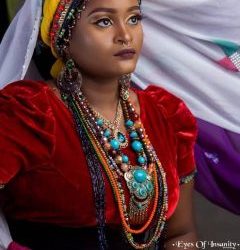
Queen Amina of Zaria (also Aminatu; d. 1610) was a Hausa warrior queen of the city-state Zazzau (present-day city of Zaria in Kaduna State). She ruled in the mid-sixteenth century. Background information Full Name: Amina Title: Queen of Zazzau Reign: 1576-1610 Coronation: 1576 Predecessor: Karama Born: Middle of the sixteenth century Died: 1610 Death place: Attaagar Father: King Nikatau Mother: Queen Bakwa Turunku
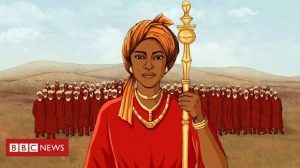
Biographical history Queen Amina was born in the middle of the sixteenth century CE to King Nikatau, the 22nd ruler of Zazzau, and Queen Bakwa Turunku (r. 1536–c. 1566). She had a younger sister named Zaria for whom the modern city of Zaria (Kaduna State) was renamed by the British in the early twentieth century. According to oral legends collected by anthropologist David E. Jones, Amina grew up in her grandfather's court and was favored by him. He carried her around court and instructed her carefully in political and military matters. At age sixteen, Queen Amina was named Magajiya (heir apparent), and was given forty female slaves (kuyanga). From an early age, Queen Amina had a number of suitors attempt to marry her. Attempts to gain her hand included “a daily offer of ten slaves” from Makama and “fifty male slaves and fifty female slaves as well as fifty bags of white and blue cloth” from the Emir of Kano. After the death of her parents in or around 1566, Amina's brother became king of Zazzau. At this point, Amina had distinguished herself as a “leading warrior in her brother's cavalry” and gained notoriety for her military skills. Queen Amina is still celebrated today in traditional Hausa praise songs as “Amina daughter of Nikatau, a woman as capable as a man.” Also Read About: Ikeji Festival
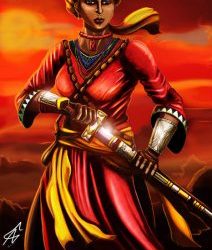
Queenship and expansion of Zazzau After the death of her brother Karama in 1576, Amina ascended to the position of queen. Zazzau was one of the original seven Hausa States (Hausa Bakwai), the others being Daura, Kano, Gobir, Katsina, Rano, and Garun Gabas. Before Amina assumed the throne, Zazzau was one of the largest of these states. It was also the primary source of slaves that would be sold at the slave markets of Kano and Katsina by Arab merchants. Only three months after being crowned queen, Amina waged a 34-year campaign against her neighbors, meant to expand Zazzau territory. Her army, consisting of 20,000 foot soldiers and 1,000 cavalry troops, was well trained and fearsome. In fact, one of her first announcements to her people was a call for them to “resharpen their weapons.” She conquered large tracts of land as far as Kwararafa and Nupe. Legends cited by Sidney John Hogben say that she took a new lover in every town she went through, each of whom was said to meet the same unfortunate fate in the morning: “her brief bridegroom was beheaded so that none should live to tell the tale.” Under Queen Amina, Zazzau controlled more territory than ever before. To mark and protect her new lands, Amina had her cities surrounded by earthen walls. These walls became commonplace across the nation until the British conquest of Zazzau in 1904, and many of them survive today, known as ganuwar Amina (Amina's walls).
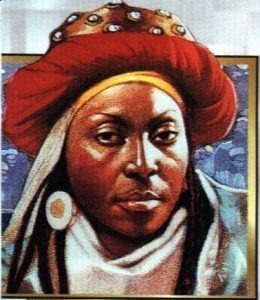
Queen Amina Death
The exact circumstances of Amina's death are not known. The nineteenth-century Muslim scholar Dan Tafa says that “She died in a place called Attaagar. It was for this reason that the kingdom of Zakzak was the most extensive among the kingdoms of Hausa, since Bauchi included many regions.” Drawing on Tafa's account, Sidney John Hogben reports that “Amina died in Atagara, near present day Idah, for at that time Amina had pushed the frontiers of Zazzau south of the Niger-Benue conference.”
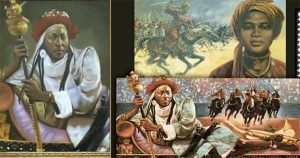
Queen Amina Legacy
As the British historian Michael Crowder has noted, after Amina's death Queen Amina Stage ...ruling class Hausa women experienced a steady diminution in their influence and were systematically deprived of their authority and autonomy. The traditional titles and offices relating to authority over women and redress of their grievances have now become nominal or have been discarded all together. Although Amina's success as a ruler did not have a trickle down effect on her female successors, Amina enjoyed a lasting reputation, bordering on legend, as a woman warrior. Sultan Bello of Sokoto wrote: Strange things have happened in the history of the seven Hausa States, and most strange of these is the extent of the possessions which God gave to Aminatu, daughter of the ruler of Zazzau. Queen Amina waged war in the Hausa lands and took them all so that the men of Katsina and the men of Kano brought her tribute. She made war in Bauchi and against the other towns of the south and of the west, so that her possession stretched down to the shores of the sea Beyond her expansion of Zazzau territory, she created trade routes throughout Northern Africa. Additionally, Queen Amina has been credited with ordering the construction of a distinctive series of ancient Hausa fortifications, known as ‘Amina’s walls’, and with introducing kola nut cultivation in the area.
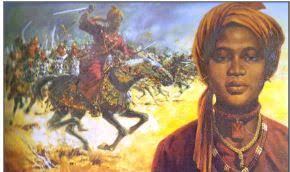
Historical references One of the earliest sources to mention Amina is a map called the Planisphere of Domingos Teixeira, which was made in 1573 and names a place in Africa as “Castelo Damina,” the Castle of Amina. One of the earliest textual sources to mention Amina is Muhammed Bello's history Ifaq al-Maysur, composed around 1836. He claims that she was "the first to establish government among ," and she forced Katsina, Kano and other regions to pay tribute to her. Bello provided no chronological details about her. She is also mentioned in the Kano Chronicle, a well-regarded and detailed history of the city of Kano, composed in the late nineteenth century, but incorporating earlier documentary material. According to this chronicle, she was a contemporary of Muhammad Dauda, who ruled from 1421–38, and Amina conquered as far as Nupe and Kwarafa, collected tribute from far and wide and ruled for 34 years. A number of scholars accept this information and date her reign to the early to mid-fifteenth century. There also is a local chronicle of Zaria itself, written largely the nineteenth century but extending to 1902, published in 1910, that gives a list of the rulers and the duration of their reigns. Queen Amina is not mentioned in this chronicle, but oral tradition in the early twentieth century held her to be the daughter of Bakwa Turunku, whose reign is dated by the chronicle from 1492–1522. On this basis, some scholars date her reign to the early sixteenth century. Historian Abdullahi Smith, however, places her reign after 1576.

Modern cultural depictions The Queen Amina Statue at the National Arts Theatre in Lagos State honors her, and multiple educational institutions bear her name. Amina is the protagonist of the historical fantasy novel Queen of Zazzau (2018) by J.S. Emuakpor, based on her life beginning in 1557 CE. More recent oral tradition has a series of lively stories about the queen, and these have found their way into popular culture. Among them were: Amina was a fierce warrior and loved fighting. As a child, her grandmother Marka, the favorite wife of her grandfather Sarkin Nohir, once caught her holding a dagger. Amina holding the dagger did not shock Marka, rather it was that Amina held it exactly as a warrior would. As an adult, Queen Amina refused to marry for the fear of losing power. She helped Zazzau (Zaria) become the center of trade and to gain more land. Her mother, Bakwa, died when Amina was 36 years old, leaving her to rule over Zaria. Reference: https://en.m.wikipedia.org/wiki/Amina Read the full article
0 notes
Text
Queen Amina of Zaria


Queen Amina of Zaria (also Aminatu; d. 1610) was a Hausa warrior queen of the city-state Zazzau (present-day city of Zaria in Kaduna State). She ruled in the mid-sixteenth century. Background information Full Name: Amina Title: Queen of Zazzau Reign: 1576-1610 Coronation: 1576 Predecessor: Karama Born: Middle of the sixteenth century Died: 1610 Death place: Attaagar Father: King Nikatau Mother: Queen Bakwa Turunku

Biographical history Queen Amina was born in the middle of the sixteenth century CE to King Nikatau, the 22nd ruler of Zazzau, and Queen Bakwa Turunku (r. 1536–c. 1566). She had a younger sister named Zaria for whom the modern city of Zaria (Kaduna State) was renamed by the British in the early twentieth century. According to oral legends collected by anthropologist David E. Jones, Amina grew up in her grandfather's court and was favored by him. He carried her around court and instructed her carefully in political and military matters. At age sixteen, Queen Amina was named Magajiya (heir apparent), and was given forty female slaves (kuyanga). From an early age, Queen Amina had a number of suitors attempt to marry her. Attempts to gain her hand included “a daily offer of ten slaves” from Makama and “fifty male slaves and fifty female slaves as well as fifty bags of white and blue cloth” from the Emir of Kano. After the death of her parents in or around 1566, Amina's brother became king of Zazzau. At this point, Amina had distinguished herself as a “leading warrior in her brother's cavalry” and gained notoriety for her military skills. Queen Amina is still celebrated today in traditional Hausa praise songs as “Amina daughter of Nikatau, a woman as capable as a man.” Also Read About: Ikeji Festival

Queenship and expansion of Zazzau After the death of her brother Karama in 1576, Amina ascended to the position of queen. Zazzau was one of the original seven Hausa States (Hausa Bakwai), the others being Daura, Kano, Gobir, Katsina, Rano, and Garun Gabas. Before Amina assumed the throne, Zazzau was one of the largest of these states. It was also the primary source of slaves that would be sold at the slave markets of Kano and Katsina by Arab merchants. Only three months after being crowned queen, Amina waged a 34-year campaign against her neighbors, meant to expand Zazzau territory. Her army, consisting of 20,000 foot soldiers and 1,000 cavalry troops, was well trained and fearsome. In fact, one of her first announcements to her people was a call for them to “resharpen their weapons.” She conquered large tracts of land as far as Kwararafa and Nupe. Legends cited by Sidney John Hogben say that she took a new lover in every town she went through, each of whom was said to meet the same unfortunate fate in the morning: “her brief bridegroom was beheaded so that none should live to tell the tale.” Under Queen Amina, Zazzau controlled more territory than ever before. To mark and protect her new lands, Amina had her cities surrounded by earthen walls. These walls became commonplace across the nation until the British conquest of Zazzau in 1904, and many of them survive today, known as ganuwar Amina (Amina's walls).

Queen Amina Death
The exact circumstances of Amina's death are not known. The nineteenth-century Muslim scholar Dan Tafa says that “She died in a place called Attaagar. It was for this reason that the kingdom of Zakzak was the most extensive among the kingdoms of Hausa, since Bauchi included many regions.” Drawing on Tafa's account, Sidney John Hogben reports that “Amina died in Atagara, near present day Idah, for at that time Amina had pushed the frontiers of Zazzau south of the Niger-Benue conference.”

Queen Amina Legacy
As the British historian Michael Crowder has noted, after Amina's death Queen Amina Stage ...ruling class Hausa women experienced a steady diminution in their influence and were systematically deprived of their authority and autonomy. The traditional titles and offices relating to authority over women and redress of their grievances have now become nominal or have been discarded all together. Although Amina's success as a ruler did not have a trickle down effect on her female successors, Amina enjoyed a lasting reputation, bordering on legend, as a woman warrior. Sultan Bello of Sokoto wrote: Strange things have happened in the history of the seven Hausa States, and most strange of these is the extent of the possessions which God gave to Aminatu, daughter of the ruler of Zazzau. Queen Amina waged war in the Hausa lands and took them all so that the men of Katsina and the men of Kano brought her tribute. She made war in Bauchi and against the other towns of the south and of the west, so that her possession stretched down to the shores of the sea Beyond her expansion of Zazzau territory, she created trade routes throughout Northern Africa. Additionally, Queen Amina has been credited with ordering the construction of a distinctive series of ancient Hausa fortifications, known as ‘Amina’s walls’, and with introducing kola nut cultivation in the area.

Historical references One of the earliest sources to mention Amina is a map called the Planisphere of Domingos Teixeira, which was made in 1573 and names a place in Africa as “Castelo Damina,” the Castle of Amina. One of the earliest textual sources to mention Amina is Muhammed Bello's history Ifaq al-Maysur, composed around 1836. He claims that she was "the first to establish government among ," and she forced Katsina, Kano and other regions to pay tribute to her. Bello provided no chronological details about her. She is also mentioned in the Kano Chronicle, a well-regarded and detailed history of the city of Kano, composed in the late nineteenth century, but incorporating earlier documentary material. According to this chronicle, she was a contemporary of Muhammad Dauda, who ruled from 1421–38, and Amina conquered as far as Nupe and Kwarafa, collected tribute from far and wide and ruled for 34 years. A number of scholars accept this information and date her reign to the early to mid-fifteenth century. There also is a local chronicle of Zaria itself, written largely the nineteenth century but extending to 1902, published in 1910, that gives a list of the rulers and the duration of their reigns. Queen Amina is not mentioned in this chronicle, but oral tradition in the early twentieth century held her to be the daughter of Bakwa Turunku, whose reign is dated by the chronicle from 1492–1522. On this basis, some scholars date her reign to the early sixteenth century. Historian Abdullahi Smith, however, places her reign after 1576.

Modern cultural depictions The Queen Amina Statue at the National Arts Theatre in Lagos State honors her, and multiple educational institutions bear her name. Amina is the protagonist of the historical fantasy novel Queen of Zazzau (2018) by J.S. Emuakpor, based on her life beginning in 1557 CE. More recent oral tradition has a series of lively stories about the queen, and these have found their way into popular culture. Among them were: Amina was a fierce warrior and loved fighting. As a child, her grandmother Marka, the favorite wife of her grandfather Sarkin Nohir, once caught her holding a dagger. Amina holding the dagger did not shock Marka, rather it was that Amina held it exactly as a warrior would. As an adult, Queen Amina refused to marry for the fear of losing power. She helped Zazzau (Zaria) become the center of trade and to gain more land. Her mother, Bakwa, died when Amina was 36 years old, leaving her to rule over Zaria. Reference: https://en.m.wikipedia.org/wiki/Amina Read the full article
0 notes
Photo

Benin’s Court is looking for Advisor NAME UTP of Benin. He is aged 35-45 and is human.
He has seen so much loss and destruction, seen how greed can destroy good lives. But he’s never given up hope. How could he? He’s seen a woman grow from being afraid to being a warrior, and now the leader of their people. He’s seen how good defeats greed, he’s helped to do so himself, and he will not give up now or ever. There’s still more work to be done, and there will be until there is peace, true peace.
His opinion on the treaty is UTP, but he will help unite Benin as one.
Connections:
Magajiya Nohir: he’s lost count of how many times she’s saved him on the battlefield, although he does tease her constantly about that one time he saved her. He firmly believes that she could unite Benin as it once was, but he knows she’s not always the most patient, so he’ll do what he can to help her.
He also has connections to the council of Kænland.
Suggested fcs include: Chadwick Boseman, Chiwetel Ejiofor, Nonso Anozie, Ray Fearon
#period rp#historical rp#fantasy rp#rp#supernatural rp#advisor of benin#benin#benin court#human#open character
0 notes